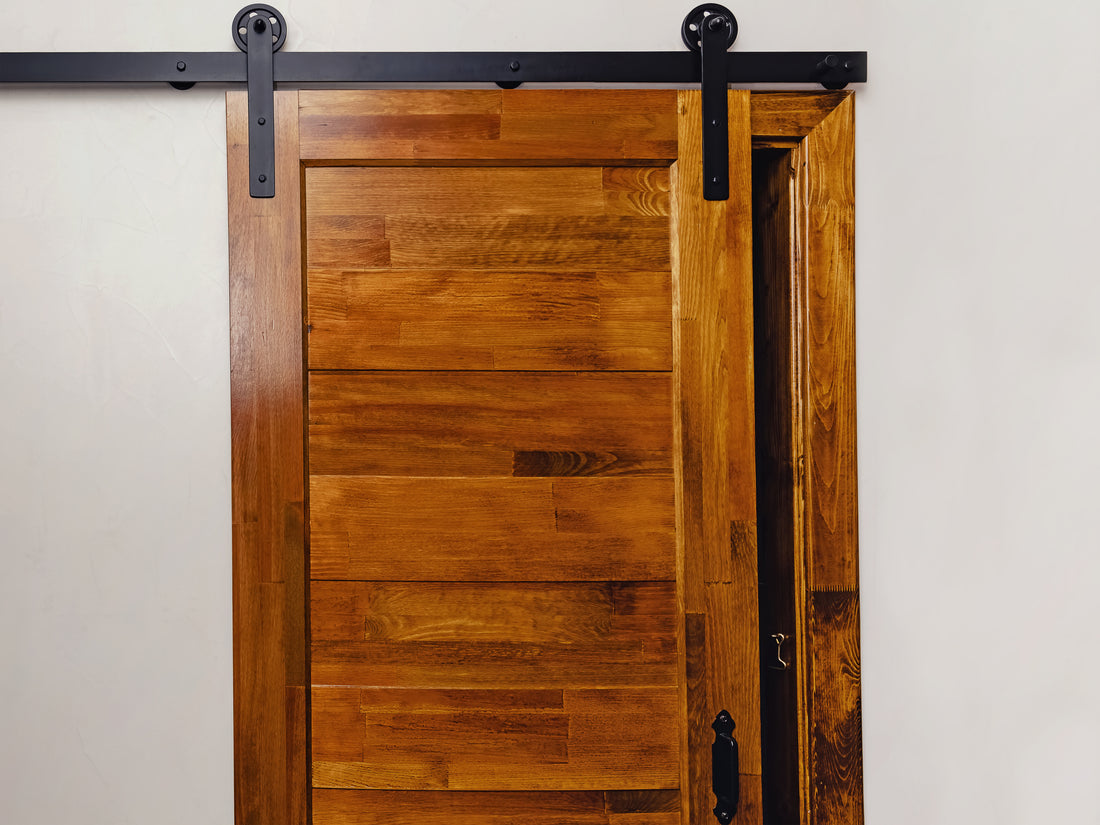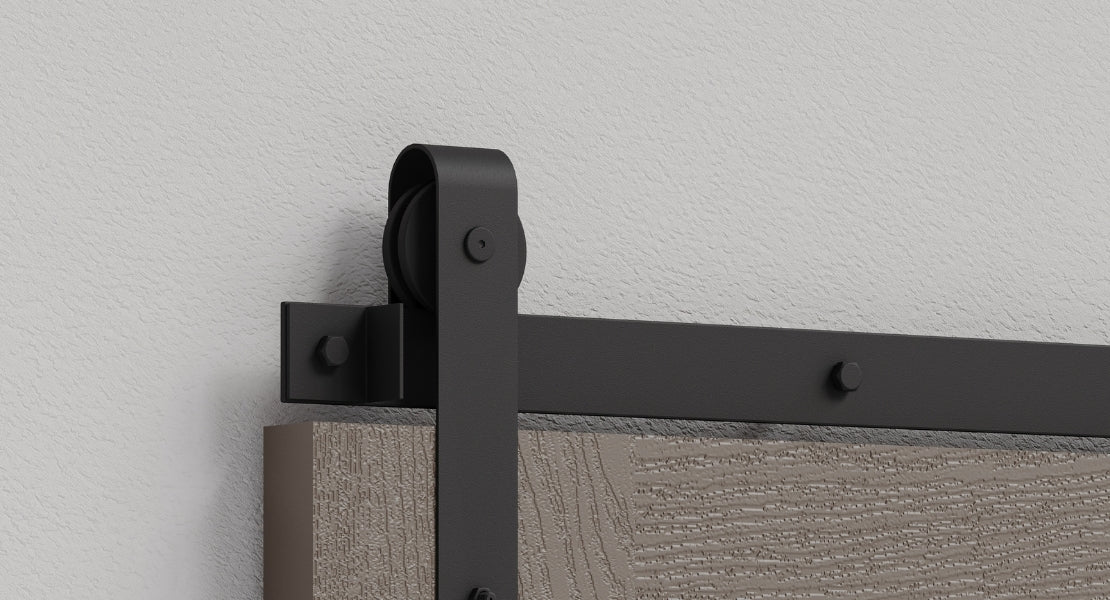
Can You Lock a Barn Door? (The answer is Yes!)
You’re not the first concerned barn door owner wondering if it is possible to lock a sliding barn door!
This is a very common worry amongst barn owners and homeowners who have barn doors installed.
Let me put your mind at ease. Can you lock a barn door? The short answer is yes!
However, even if it is possible to lock a barn door, is there a convenient method to do so? You'll find all the information you need about locking your barn door in the following paragraphs.
I’ll detail:
- The various ways to secure a sliding barn door
- The importance of different requirements in choosing a method
- Different door styles’ suitability to different lock styles
- Types of locks and factors to consider for each.
Let’s get into it!
Can You Lock a Sliding Barn Door?
Yes! There are many ways to secure the door to your barn. This includes a number of different locks that you can purchase and install yourself.
Certain door styles, however, will not work with certain lock styles. As such, you can’t head to your local DIY home maintenance store and pick up the first padlock you see.
First, take some time to check whether you will be locking two doors together, locking a door to a fixed frame, or locking from the inside or outside.
Also, would you prefer a key or code lock – which would be the most convenient and secure for you?
Next, check if your door opens outwards or slides. Sliding barn doors, in particular, require particular lock styles.
What about the level of security required? Do you want maximum security or a simple latch to keep animals from escaping?
Read on to find out more about carefully choosing a well-suited lock for your barn door!
Types of Locks for Barn Doors
Let’s take a look at locks! Some of your options include the hook and eye lock, the barrel bolt, a teardrop lock, or a flip latch.
Hook and Eye Latch
A hook and eye latch is easily one of the simplest and most common barn locks you’ll find. You can easily recognize it by its appearance — it’s made of a hook component that slots into a sturdy ring.
The advantage of a hook and eye latch is its ease of use. For barn doors, you’ll attach the latch onto the side while the hook rests on the door itself.
To lock from the outside, you can choose a hook and eye lock with a padlock to secure externally and lock with a key. The two small fixtures can be easily screwed into the door(s) that you want to lock easily.
It gets the job done and provides a decent level of security without all the bells and whistles. And the best part, it could simply fade into the background as it doesn’t draw any attention to itself!
Barrel Bolt Latch
A barrel bolt latch generally works similarly to a hook and eye latch, but they are so different in terms of shape and size. This latch has a more robust appearance, creating a greater sense of security, while also being very easy to install and use!
Barrel bolts are very popular as they can withstand a large amount of force, making them ideal for barn doors. If this strikes your fancy, choose a barrel bolt latch with a padlock clasp set attached so you can secure the door from the outside.
Even if you use the door frequently, the stainless steel barrel bolts should stand the test of time. Barrel bolts are happiest with dry areas to prevent rusting or weakness from the elements.
Just note that a particularly large barrel bolt can be sturdier, but it also does stand out. However, a barrel bolt usually won’t draw much attention, and it disappears from view easily like a hook and eye latch.
Teardrop Latch
The main characteristic of a teardrop latch is its swivel shape that’s usually installed internally. To secure a door, the teardrop latch swivels into a slot and stays in place, protecting your barn door from anyone trying to sneak in.
A teardrop latch is very easy to use while having a sleek design. However, note that this type of lock is best used indoors. It won’t really work as well externally, as you can’t add a padlock to it!
Flip Latch Method
A flip latch is a latch that you can rotate into a slot, fixing the door shut. It normally requires just four screws to be installed into a wooden door and wall, or into two wooden doors.
There are 180-degree and 90-degree flip latches available, opening up your choices for securing the door. You can fix your barn door to a perpendicular wall, or you could even lock two doors together!
For external doors, flip latches are a sturdy option as there are padlock options for added security.
Factors to Consider When Choosing a Lock
Barn door security is key to keeping potential intruders out. That’s why you should consider the right barn door lock seriously with the help of several factors to keep in mind.
Depending on your use case, a simple hook and eye might work. The same solution won’t work for everyone, though!
Material of the Door
A barn door is usually made of wood, but there are also larger barns that require heavy-duty metal instead. The exact material of the door affects the effectiveness of your chosen lock.
For example, a lock that relies on ordinary screws won’t work as well in a metal door without specialized equipment. Make sure to check first what you’re working with before making the choice.
Placement of the Door
Are you working with a single sliding barn door or two doors that meet at the center? Depending on how your doors interact, some lock options are out of the question.
A hook and eye latch won’t really work as well when securing two doors at the center. Similarly, other locks might fit awkwardly or appear clunky when installed on specific door placements.
Keep the door structure and placement in mind when selecting the right lock.
Material of the Lock
When you feel a lock in your hand, it should feel relatively heavy. This shows that it has been made out of quality hard materials and will not bend or snap under force.
If your lock might be rained on, try to find a rust-resistant material. Rust means decay and irritating replacements!
Frequency of Use
If you only really use the barn door every once in a while, you can get by with a smaller lock. For those who consistently open and close doors daily, a more robust and secure lock while not needing rocket science to lock and unlock is ideal.
The frequency of use is a determining factor that would make some locks less efficient than others. If your barn’s particularly busy, a simple barrel bolt can work wonders without being a pain every time.
The faster it is to unlock your door, the better. If you find a certain kind of lock confusing or tedious, then it’s best to avoid it!
Level of Security Needed
The rule of thumb is that the greater the security that a lock offers, the better. However, this isn’t always a hard and fast rule. It’s always best to balance the need for security with convenience and ease of use. Try to get both with your choice of lock.
If your barn is in a generally safe area, an intricate locking system might be overkill.
However, if you have an exterior door, you can’t be too careful with secure locking choices. I would recommend using two locks (one near the top, and one near the bottom), or using a padlocked version of one of the locks above.
Accessibility and Ease of Use
No one has the time or patience to solve a math problem just to unlock the door. Always consider ease of use, especially if you’re using a door very often.
Accessibility is also a great factor to remember. If the barn door is used by people who have sight challenges or can only use a single limb, it has to avoid giving them a hard time just getting things done.
Aesthetic Appeal
This isn’t usually as major as the other factors, but it’s still something to consider! A lock that can easily blend into the background and doesn’t draw any attention is always a welcome bonus.
Clunky locks that feel like they shouldn’t be on your barn door can create an awkward look. While these won’t affect security matters, they can appear ridiculous nonetheless!
Looking for a barn door or hardware? Check out the Barn Door Hardware Store!




